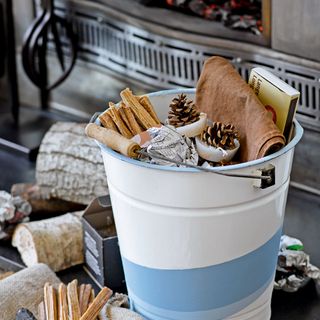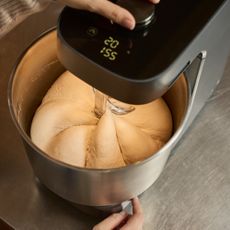Did you know that fans can help keep us warmer in winter?
Not many people would think to get the fans out BUT, if you want your heating to do better this winter, you may want to read on...
Winter officially begins today and the cold weather is well and truly upon us, yet it is likely that very few people would buy a fan for winter help heat their home.
With the common misconception that fans serve only to circulate cool air in summer, Ecoair reveals how fans can also help to keep your home warmer (and save you money!) during the harsh, colder months.
Read more: the best fans for keeping your home's air the perfect temperature

Tips for using fans this winter:
- Go for floor standing rather than ceiling fans to ensure the heated air is distributed at the correct level and to avoid wasting energy in the form of heated air rising to the ceiling.
- Choose DC for lower energy consumption, lower energy bills, lower noise levels and more programmable features.
- Ensure that fans are only switched on when people are in the room. Timer features and remote controls allow for increased energy efficiency.
- Keep the fan speed on a low to medium setting to circulate and mix the heated air to warm the room more efficiently rather than a higher fan speed which would cool the warm air in the room.
- Ensure the temperature sensors on your main source of heating are set correctly.
- Keep the fan near the heat source but not too close corner of the room, to help gently blow the air away from the heat source to warm the room effectively.
Read more: 10 ways to pack your shed for winter

“Using a fan in the winter helps to circulate heated air more efficiently around the room," says Sally Fok, Ecoair co-founder and MD.
“Moving and mixing the air makes your heating system more efficient and ensures energy in the form of heated air that has risen to the ceiling is reused instead of wasted.
“Those with fireplaces and wood burning stoves will also benefit from better heat distribution, provided the fan is correctly positioned to effectively circulate the heat radiated or convected by the stove or fireplace.
Get the Ideal Home Newsletter
Sign up to our newsletter for style and decor inspiration, house makeovers, project advice and more.
“Often overlooked in favour of the ceiling fan, a pedestal fan is the superior choice, as it will distribute air at the correct level for us to feel the benefits. Its portability also allows it to be positioned anywhere in the home.
Read more: What is the formula for a perfect Friday night in this winter?
“Likewise, a DC powered fan is preferable to an AC fan, the more commonly available in the UK, as it is much more energy efficient, running from 0.35 watts on an ultra-low speed up to a maximum of only 27 watts on the highest setting (as opposed to 45 watts in the case of AC). A DC fan also benefits from an array of programmable settings.”
Will you be getting your fan out this winter?
Jennifer is the Deputy Editor (Digital) for Homes & Gardens online. Prior to her current position, she completed various short courses a KLC Design School, and wrote across sister brands Ideal Home, LivingEtc, 25 Beautiful Homes, Country Homes & Interiors, and Style at Home.
-
 Is navy a good colour for a bedroom? Decor experts explain how to use this soothing shade to create a tranquil and relaxing space
Is navy a good colour for a bedroom? Decor experts explain how to use this soothing shade to create a tranquil and relaxing spaceDeep and moody or timeless and classic, these navy bedroom ideas will never go out of style
By Amy Lockwood
-
 Ooni has unveiled a stand mixer to 'revolutionise' making pizza dough at home — here's a first look
Ooni has unveiled a stand mixer to 'revolutionise' making pizza dough at home — here's a first lookIf you're looking for a way to improve the quality of your at-home bakes, the Halo Pro Spiral Mixer is worth a look
By Molly Cleary
-
 How to create a sensory home – interiors experts reveal 5 easy ways to style your home and soothe your mind
How to create a sensory home – interiors experts reveal 5 easy ways to style your home and soothe your mindYou can turn any space into a sanctuary by following these simple steps
By Maddie Balcombe